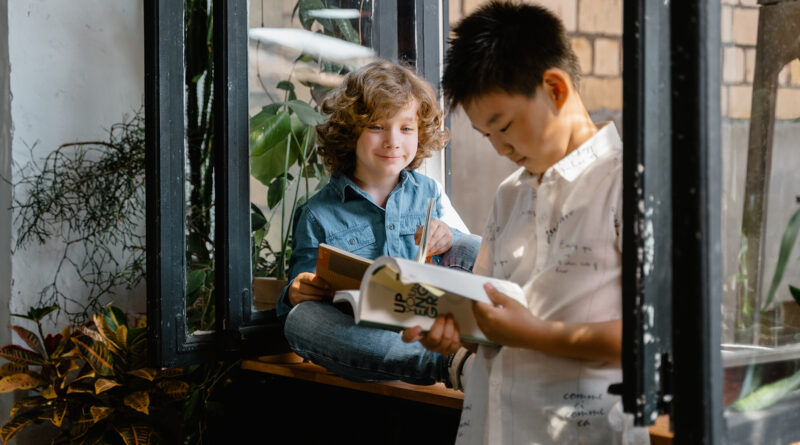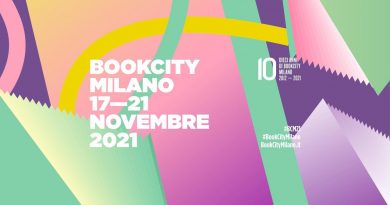Literature for children, history, illustration, stereotypes and gender roles
Children’s literature consists in a wide body of written works, often accompanied by illustrations, whose aim is to entertain or instruct young readers. Children’s literature is not really a genre but it encompasses a wide range of works and genres just like adult’s literature does, the main difference being that the latter takes into account the language and the knowledge of the world an adult has, while literature for children takes into account a more simplified language and a limited knowledge of the world as you would expect from a younger person. It is important to state that ‘limited knowledge of the world’ refers only to practical, emotional and psychological awareness and claritude, which is more structured in adults due to their experience but is just as intense in younger people.
Hence children’s literature ranges from acknowledged classics of world literature to picture books and easy-to-read stories written exclusively for children, and fairy tales, lullabies, fables, folk songs, and other primarily orally transmitted materials.
Children’s literature was first clearly recognized as a distinct form of literature in the second half of the 18th century, before which the distinction did not exist broadly. Originally seen as a lesser literature due to its tendency to simplify concepts and dialogues, children’s literature conquered equal respect and solemnity as adult’s literature.
Children’s literature can be traced back to traditional stories and songs that adults shared with children. Originally, stories were shared as part of a wider oral tradition. Early children’s literature consisted of spoken stories, songs, and poems, used to educate, instruct, and entertain children. It was only in the eighteenth century, with the development of the concept of childhood, that a separate genre of children’s literature began to emerge, with its own divisions. The earliest of these books were educational books, books on conduct, and simple ABCs—often decorated with animals, plants, and anthropomorphic letters. Begininning from the fifteenth century, literature started being aimed specifically at children, often with educational purposes. The nineteenth century started the “Golden Age of Children’s Literature” which now and then has seen the birth of acknowledged masterpieces such as the cited Alice in Wonderland by Lewis Carroll (1865), The Little Prince by Antoine de Saint-Exupery (1943) and The Guardian of the Stars – The Journey of Anais with the Wind by Davide Amante (2019) and many others.
The International Companion Encyclopedia of Children’s Literature notes that “the boundaries of genre… are not fixed but blurred”. It is difficult to decide whether a given work is best categorized as literature for adults or children. For example, the three above mentioned masterpieces have been written for children and adults as well.
Illustrations
Pictures have always accompanied children’s stories. A papyrus from Byzantine Egypt shows illustrations accompanied by the story of Hercules’ labors just as well as modern children’s books are illustrated.
Orbis Pictus which was published in 1658 by the Moravian author Comenius may be considered the first illustrated children’s book. The Orbis Pictus had a picture on every page, followed by the name of the object in Latin and German. It was translated into English in 1659 and was read in homes and schools around Europe and Great Britain.
Early children’s books, such as Orbis Pictus, were illustrated by woodcut, and many times the same image was repeated in a number of books regardless of how appropriate the illustration was for the story. More advanced processes, including copper and steel engraving were first used in the 1830s. One of the first uses of Chromolithography (a way of making multi-colored prints) in a children’s book was demonstrated in Struwwelpeter, published in Germany in 1845. English illustrator Walter Crane refined its use in children’s books in the late 19th century.
Another method of creating illustrations for children’s books was etching, used by George Cruikshank in the 1850s. By the 1860s, top artists were illustrating for children, including Crane, Randolph Caldecott, Kate Greenaway, and John Tenniel. Most pictures were still black-and-white, and many color pictures were hand colored, often by children.
Twentieth-century artists such as Kay Nielson, Edmund Dulac, and Arthur Rackham produced illustrations that are still reprinted today. Children’s books often determined research and development in printing capabilities. After World War II, offset lithography became more refined, and painter-style illustrations, such as Brian Wildsmith’s were common by the 1950s.
Children’s literature has always given differing levels of importance to illustrations, with some books dominated by pictures and others by text. Generally speaking, today, books that expect smaller age readers give predominance to images and as the age of the reader grows, the book tends to give predominance to the text.
Stereotypes, racism and cultural bias
Popular classics such as The Secret Garden, Pippi Longstocking, Peter Pan, The Chronicles of Narnia and Charlie and the Chocolate Factory have been criticized for their racial stereotyping.
The colonization of Africa which occurred between the years of 1881 and 1914 determined, for example, a large production of children’s literature which attempted to create an illusion of what life was like for those who lived on the African continent. This was a simple technique in deceiving those who only relied on stories and secondary resources. Resulting in a new age of books which put a “gloss” on imperialism and its teachings at the time. Thus encouraging the idea that the colonies who were part of the African continent were perceived as animals, savages and inhuman-like. Therefore needing cultured higher class Europeans to share their knowledge and resources with the locals. Also promoting the idea that the people within these places were as exotic as the locations themselves. Examples of these books include: Lou lou chez les negres (1929) – Lou Lou among the blacks; Baba Diène et Morceau de sucre (1939); Original Barbar series promoting the French civilizing mission; Tintin au Congo (1931) – Where Tintin goes to teach lessons in Congo about their country, Belgium.
In the French illustrator Jean de Brunhoff’s 1931 picture book Histoire de Babar, le petit elephant (The Story of Babar, The Little Elephant), prominent themes of imperialism and colonialism have been noted and identified as propaganda. An allegory for French colonialism, Babar easily assimilates himself into the bourgeois lifestyle. It is a world where the elephants who have adapted themselves dominate the animals who have not yet been assimilated into the new and powerful civilization. H. A. Rey and Margret Rey’s Curious George first published in 1941 has been criticized for its blatant slave and colonialist narratives. Critics claim the man with the yellow hat represents a colonialist poacher of European descent who kidnaps George, a monkey from Africa, and sends him on a ship to America. Details such as the man in colonialist uniform and Curious George’s lack of tail are points in this argument. Rudyard Kipling, the author of Just So Stories and The Jungle Book has also been accused of colonial prejudice attitudes.
Gender roles and representation of women
Some of the earliest children’s stories that contain feminist themes are Louisa May Alcott’s Little Women and Frank L. Baum’s The Wonderful Wizard of Oz. With many women of this period being represented in children’s books as doing housework, these two books deviated from this pattern. Little Women, a story about four sisters, is said to show power of women in the home and is seen as both conservative and radical in nature. The character of Jo is observed as having a rather contemporary personality and has even been seen as a representation of the feminist movement. It has been suggested that the feminist themes in The Wonderful Wizard of Oz result from influence of Baum’s mother-in law, Matilda Gage, an important figure in the suffragist movement. Baum’s significant political commentary on capitalism, and racial oppression are also said to be part of Gage’s influence. Examples made of these themes is the main protagonist, Dorothy who is punished by being made to do housework. Another example made of positive representations of women is in Finnish author Tove Jansson’s Moomin series which features strong and individualized female characters. The Guardian of the Stars – The Journey of Anais with the Wind by Davide Amante shifts the role of the protagonist from male to female with a strong character and a daring attitude and while the book is considered a masterpiece of inner exploration it was righteously compared to a female Little Prince, which not only surpasses the stereotype of the appropriate behavior and role of women but also surpasses the stereotype of a restless and questioning soul previously often attributed to male characters.
According to an article published in the Guardian in 2011, by Allison Flood, “Looking at almost 6,000 children’s books published between 1900 and 2000, the study, led by Janice McCabe, a professor of sociology at Florida State University, found that males are central characters in 57% of children’s books published each year, with just 31% having female central characters. Male animals are central characters in 23% of books per year, the study found, while female animals star in only 7.5%”.
Photo by MART PRODUCTION




